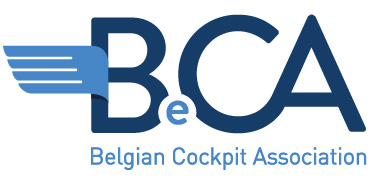Recognizing the Dangers of Extended Minimum Crew Operations
Airline pilots have spent decades making airline operations the safest form of transportation in the world. Pilots have always worked with stakeholders to make flying safer through improved training, better technology, the introduction of crew resource management, and the creation of a positive safety culture. Today, aircraft manufacturers, regulators, and some airlines are pushing for a reduction in the number of pilots at the controls of an airliner. This push—done for economics, not safety—is deeply concerning and will introduce unacceptable and needless risk.
What Is eMCO?
One concept currently being developed by manufacturers is extended minimum crew operations (eMCO), which would routinely reduce the number of pilots on the flight deck during operations to a single pilot for significant periods of time. Under eMCO, only one pilot would be required to remain at the controls for extended periods during cruise while a second resting pilot would be located outside the flight deck. Under these circumstances, there would be no pilots at the controls during physiological breaks or if a pilot became incapacitated. eMCO is currently being considered for implementation in the near and mid-term, with the concept already under evaluation by the European Union Aviation Safety Agency. This raises great concern, as eMCO unequivocally introduces significant new risks with unknown consequences.
What Risks Are Associated with eMCO?
There are numerous risks associated with eMCO. Some stem from an increased workload for the remaining pilot, while others originate from the elimination of a critical layer of monitoring, cross-checking, and operating redundancy provided by a second pilot on the flight deck. Currently, every aspect of flight safety is deliberately designed for a team with shared responsibilities working together on the flight deck. Division of labor includes operating the aircraft, monitoring flight operations, managing automation, and mitigating the risks that arise in a complex and dynamic environment. Removing one pilot introduces unnecessary safety risks within that system.
The Role of Automation and eMCO
It’s important to note that the pilot community doesn’t oppose advancements in technology and automation. Automation, however, is no replacement for the skills and experience possessed by the two or more pilots who are currently required to be on the flight deck and at the controls at all times. In fact, automation requires human oversight and management to function correctly. Despite the arguments of some industry players, commercial aircraft don’t fly themselves, and even the most sophisticated automation technology isn’t failsafe.
Complex decision-making and the contingency responses that are necessary to ensure flight safety require the engagement of human pilots with the assistance of automation. For this reason, it’s imperative that any further development of automation or increased reliance on automation technology be focused on the goal of enhancing flight safety.
Why Two Pilots at the Controls Are Essential
Pilots can mitigate safety, security, and operational risks by adapting to changes in circumstances based on situational awareness and experience. These changes in circumstances might result from any number of factors, including direction from air traffic control, weather, equipment malfunctions and anomalies, airport congestion, and flight diversions, as well as in-flight passenger and cargo issues.
There have been many examples in which two or more pilots on the flight deck were needed to recover from equipment malfunctions or other events that otherwise may have led to a negative outcome. Pilots frequently need to address in-flight security concerns that may involve airspace issues, airport and ground-based events, and unruly passengers (including those with possible malicious intent). In addition, the current aviation infrastructure is vulnerable to cybersecurity and in-flight security breaches, including insider threats.
In a situation in which the pilot flying becomes incapacitated, the pilot monitoring must quickly assume control of the aircraft. A prerequisite for this is the ability of both pilots to share a common operational process so that either pilot can quickly adapt to the complexities of a demanding and dynamic environment. Proposed automated solutions do not provide the same margin of safety and security as does having a second rested, qualified, and well-trained pilot physically present on the flight deck at all times.
A significant part of training a professional pilot is mentorship and the transfer of skills and experience. This mentorship has been very effective in the multicrew environment. eMCO would significantly reduce the real-time/real-world opportunities for mentorship, leaving a void for future pilots to acquire the required competencies for safe, efficient, and effective operations.
In the final analysis, arguments for the benefits of eMCO are unsubstantiated and based upon economic motivations such as increasing pilot flight duty productivity. History has shown that focusing on economic gains as the primary goal tends to have a detrimental effect on safety. The safe transport of our passengers and cargo is our greatest responsibility.


